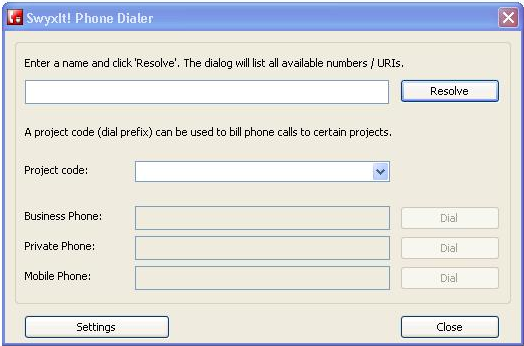15.3 Dialing from Lotus/IBM/HCL Notes
To dial from Lotus/IBM/HCL Notes, a button is available in the Lotus/IBM/HCL Notes toolbar. This allows you to start the SwyxIt! Classic dialing help in Lotus/IBM/HCL Notes from any location.
This feature is not part of SwyxIt! Classic Setups. The installation pack is available via Swyx Help Center.
After activating the SwyxIt! Classic Phone Dialer, you can use a search function to find a contact in the standard databases. The contact's numbers can then be transferred to the Phone Dialer.
If you start the SwyxIt! Classic Phone Dialer in an e-mail, a calendar entry, an allocated task or a Lotus/IBM/HCL Notes contact, the SwyxIt! Classic Phone Dialer offers the numbers found in each contact.
If the e-mail is a Voicemail, the caller and not the sender (SwyxServer) will be applied in the SwyxIt! Classic Phone Dialer.
To call a subscriber from Lotus/IBM/HCL Notes

In order for SwyxIt! Classic to be able to use the numbers entered in Lotus/IBM/HCL Notes, the numbers must be recorded in the correct format. See also 15.2.1 Number formats.
Please pay attention to the country-specific particularities, as in Italy, for example: The preceding zero must be included here in the local area code.